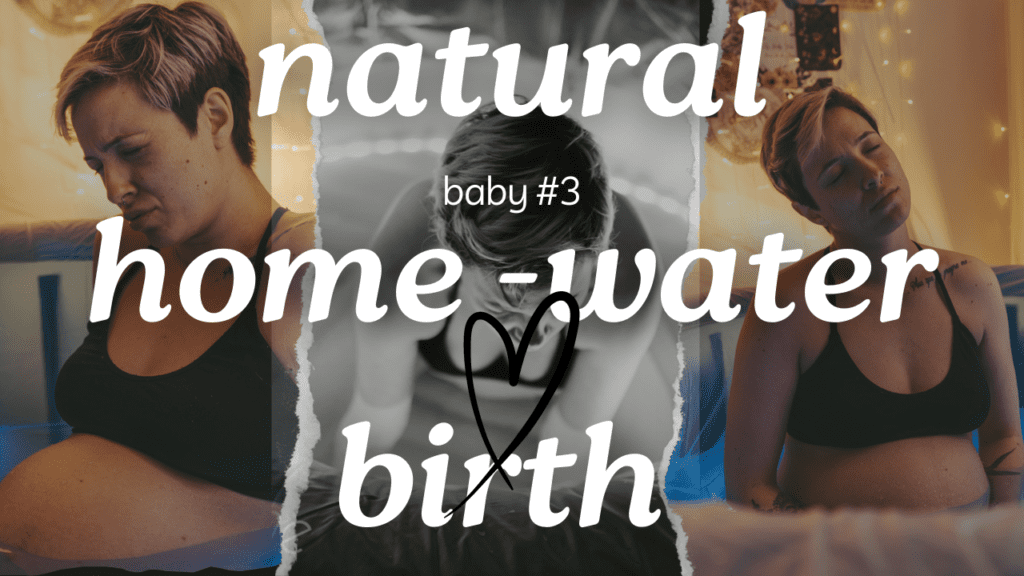Best 11 Inspiring Books To Prepare For Your Homebirth
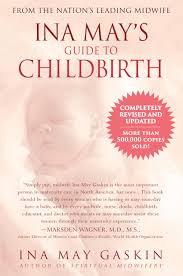
Ina May’s Guide to Childbirth
Ina May Gaskin
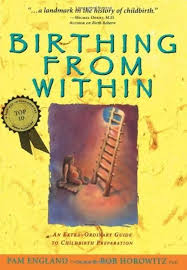
Birthing from Within
Pam England and Rob Horowitz
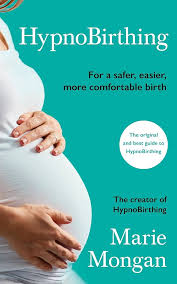
HypnoBirthing: The Mongan Method
Marie F. Mongan
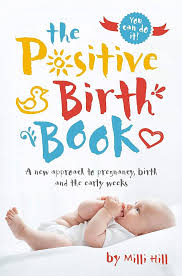
The Positive Birth Book
Milli Hill
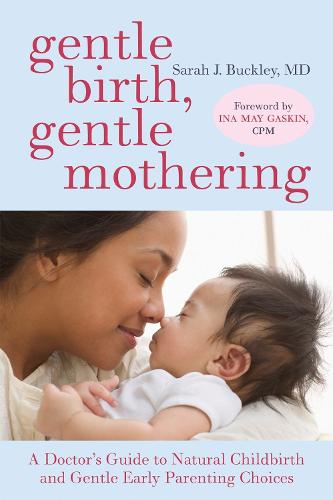
Gentle Birth, Gentle Mothering
Dr. Sarah J. Buckley
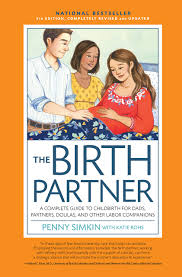
The Birth Partner
Penny Simkin
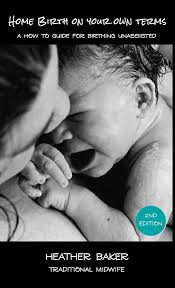
Homebirth on Your Own Terms
Heather Baker
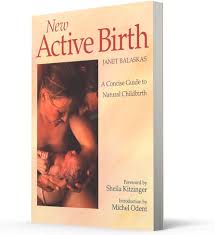
Active Birth: The New Approach to Giving Birth Naturally
Janet Balaskas
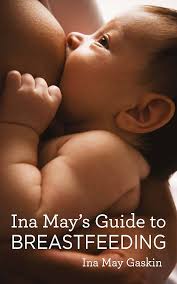
Ina May’s Guide to Breastfeeding
Ina May Gaskin
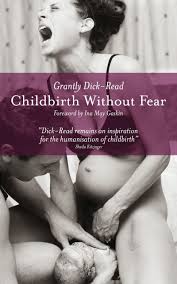
Childbirth Without Fear
Grantly Dick-Read
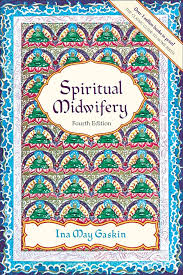
Spiritual Midwifery
Ina May Gaskin
Table of Contents
Welcoming a baby into the world is one of life’s most profound experiences, and preparing for a homebirth is a journey that benefits immensely from being well-informed. For many parents-to-be, the thought of a natural homebirth can feel both empowering and daunting. This is where books become invaluable companions, offering evidence-based insights, emotional support, and inspiring stories to help you trust your body and the birth process.
When I was preparing for my first homebirth, I dove into a library of resources, soaking up as much knowledge as I could. Each page filled me with confidence and reassurance, and I found myself less fearful and more excited about what lay ahead. By my second homebirth, I felt equipped not only with practical tips but also with the mental and emotional tools I needed for an empowering experience.
This curated list of books is for anyone embarking on a homebirth journey. These titles have been handpicked to provide practical advice, emotional preparation, and a wealth of inspiration. Whether you’re seeking guidance on midwifery wisdom, techniques for relaxation, or empowering birth stories, these books will support you every step of the way.
As someone who’s had two empowering homebirths, I know how valuable the right resources can be. You can read more about my homebirth experiences here.
Why Read Books to Prepare for Homebirth?
- Education is Empowerment
When it comes to giving birth, knowledge truly is power. Books offer a treasure trove of information, helping expectant parents understand their options and make informed decisions about their birthing experience. From understanding birth physiology to navigating birth plans, reading ensures you’re prepared for every scenario. - I wish I had discovered these books before my first baby was born in the hospital. The experience left me with trauma I didn’t anticipate, and it took time and effort to heal from it. Had I been equipped with the wisdom and insights these books provide, I might have been able to prevent or mitigate that experience altogether. By learning about my options and trusting the process, I believe I could have approached that birth with greater confidence and calm.
- Evidence-Based Knowledge
The best books on homebirth are grounded in research and midwifery practices. They demystify the birthing process, helping you understand how your body works during labor and how to trust the natural rhythm of birth. - Emotional and Inspirational Support
Birth can be as much an emotional journey as a physical one. Many books include personal stories of women who have walked this path before you. These accounts can be a source of comfort and inspiration, reminding you of the strength and resilience inherent in every parent-to-be. - Trusting the Natural Birth Process
Books about homebirth encourage you to embrace the process with confidence. They provide tools and techniques to help you stay calm and focused, ensuring you feel prepared and supported every step of the way.
1. Ina May’s Guide to Childbirth by Ina May Gaskin
Ina May Gaskin is a name synonymous with natural childbirth. As one of the world’s most renowned midwives, her book, “Ina May’s Guide to Childbirth,” has become a cornerstone for anyone interested in homebirth, midwifery, or the natural birth process. This book doesn’t just teach; it inspires, empowering readers to trust their bodies and embrace the transformative journey of birth.
Why It’s a Must-Read
The first half of the book is dedicated to real-life birth stories from women who have birthed naturally, often in home settings. These narratives are raw, honest, and deeply empowering, showcasing the incredible strength and resilience of birthing parents. The second half dives into practical advice, offering insights on managing labor, reducing fear, and understanding the mind-body connection during childbirth.
Favorite Quote
“Your body is not a lemon.” This line, simple yet profound, became my mantra during labor. Ina May reminds us that our bodies are not defective or broken—we are designed to birth. It reframes the way we think about our capabilities, shifting from fear to trust.
Key Takeaways
- Positive Birth Stories: The stories highlight how natural birth can be a deeply fulfilling and empowering experience. They offer a stark contrast to the fear-based narratives often surrounding childbirth.
- Practical Advice from a Midwifery Legend: Gaskin shares her extensive knowledge on topics like managing pain, creating a supportive birth environment, and handling unexpected challenges.
- The Mind-Body Connection: The book emphasizes the profound link between a person’s mindset and the physical experience of labor, encouraging relaxation and trust in the natural process.
How It Shaped My Journey
I read this book before my first homebirth, and it had a profound impact on me. One of the stories about a woman who danced through her labor stuck with me—I remember swaying during my contractions, imagining my baby moving down with each rhythm. Ina May’s advice on breathing deeply and releasing fear helped me remain calm even when labor intensified. Her words reminded me that birth is not something happening to me but something I am actively doing.
Beyond Birth
This book didn’t just prepare me for childbirth; it transformed how I view my body’s capabilities. It gave me a renewed sense of confidence—not just for birthing, but for motherhood and beyond. I found myself approaching challenges with the same trust in my body and instincts that Ina May taught me to have during labor.
2. Birthing from Within by Pam England and Rob Horowitz
“Birthing from Within” takes a unique approach to childbirth preparation, combining practical advice with emotional and creative exploration. This book is not just about the physical process of giving birth; it’s about the emotional, mental, and even spiritual journey that parents go through. Pam England, a midwife and childbirth educator, encourages readers to view birth as a rite of passage, making it a perfect resource for those seeking a holistic perspective.
Why It’s a Must-Read
Unlike many other books that focus primarily on the clinical or physiological aspects of birth, “Birthing from Within” dives deep into emotional preparation. It incorporates art, storytelling, and mindfulness exercises to help parents process their fears and build confidence for labor. This book is especially empowering for parents who may feel apprehensive or unprepared for the challenges of natural birth.
Favorite Exercise:
One of the exercises involves creating a visual representation of your thoughts and fears about birth. I found this practice incredibly freeing, as it allowed me to confront hidden anxieties in a safe and creative way.
‘birth is a heroic journey, not a medical event.’
Key Takeaways
- Emotional Preparation: The book teaches you how to embrace the emotional and psychological challenges of birth, not just the physical ones.
- Creative Exploration: Through drawing, journaling, and visualization, it encourages you to process your fears and dreams about birth.
- Mindfulness Techniques: Exercises like breathing, meditation, and guided imagery help you stay grounded and focused during labor.
How It Helped Me
I read this book while preparing for my second homebirth, and it resonated with me on a deeply personal level. One of its lessons was about surrendering to the process of labor rather than trying to control it. During contractions, I found myself recalling the visualizations I had practiced, imagining myself as a powerful current in a flowing river. This mindset helped me stay calm and connected to my baby throughout labor.
Who It’s Best For
This book is ideal for parents who want a holistic and introspective approach to birth preparation. Whether you’re a first-time parent or have given birth before, “Birthing from Within” offers tools for emotional empowerment that extend beyond the birth itself.
3. HypnoBirthing: The Mongan Method by Marie F. Mongan
“HypnoBirthing: The Mongan Method” introduces a revolutionary approach to childbirth, focusing on relaxation, self-hypnosis, and visualization to create a calm, positive birthing experience. For parents-to-be who are drawn to the idea of reducing pain and anxiety during labor, this book provides practical tools and techniques to help achieve a more serene and empowered birth.
Why It’s a Must-Read
HypnoBirthing challenges the common narrative that birth is a painful and traumatic experience. Instead, it reframes childbirth as a natural, gentle process that can be embraced with confidence and calm. The book provides step-by-step instructions on how to use breathing techniques, guided imagery, and affirmations to manage labor more effectively.
Favorite Quote:
- “When you change the way you view birth, the way you birth will change.” This line completely shifted my perspective. It helped me see birth as something I was an active participant in, not something that was happening to me.
Key Takeaways
- Relaxation Techniques: Breathing exercises and guided meditations to help release tension and fear during labor.
- Self-Hypnosis for Birth: Teaches how to reach a deep state of relaxation and focus that allows you to work with your body during contractions.
- The Fear-Tension-Pain Cycle: Explains how fear can create physical tension, leading to increased pain, and provides tools to break this cycle.
How It Helped Me
While preparing for my first homebirth, I practiced the breathing and visualization techniques daily. During labor, these tools became my lifeline, helping me stay calm and in control even during the most intense contractions. I also found that the affirmations from the book, such as “Each surge brings me closer to meeting my baby,” helped me shift my mindset from fear to excitement.
For Partners and Support People
This book isn’t just for the birthing parent—it also includes guidance for partners and doulas on how to create a peaceful, supportive environment. My husband found the suggestions for how to help me through contractions invaluable, especially when using the light-touch massage techniques described in the book.
Who It’s Best For
If you’re someone who finds comfort in structure and practice, HypnoBirthing offers a clear framework for preparing mentally and emotionally for labor. It’s particularly helpful for those who want to reduce reliance on medical interventions and embrace a natural, calm birth process.
4. The Positive Birth Book by Milli Hill
Milli Hill’s “The Positive Birth Book” is a modern, no-nonsense guide to reclaiming childbirth as an empowering and joyful experience. With practical advice, evidence-based information, and inspiring birth stories, this book equips parents-to-be with the tools they need to make informed decisions and approach their birth with confidence. It challenges outdated myths about childbirth and promotes a positive, informed mindset.
Why It’s a Must-Read
This book strikes the perfect balance between being informative and empowering. It breaks down complex medical jargon into simple, accessible language and helps you create a birth plan that’s rooted in your preferences. Unlike many guides, it includes a modern perspective on birth that resonates with today’s parents.
Favorite Section:
The chapter on creating a “birth map” rather than a rigid birth plan stood out to me. Hill encourages flexibility while ensuring you remain at the center of every decision. This approach gave me peace of mind, knowing I could adapt while still staying true to my vision.
Key Takeaways
- Informed Decision-Making: The book empowers parents to understand their options and advocate for their preferences during labor and birth.
- Practical Guidance: From writing a birth map to managing unexpected changes, this book is packed with actionable advice.
- Real-Life Birth Stories: These stories reflect diverse experiences, showing that every birth is valid and powerful in its own way.
How It Helped Me
I read this book before my second homebirth, and it completely changed how I viewed the concept of “control” during labor. By focusing on a birth map, I was able to let go of perfection and embrace the process. The book also introduced me to the importance of language in birth, such as referring to contractions as “surges,” which helped shift my mindset.
Who It’s Best For
This book is ideal for first-time parents and seasoned moms alike. Whether you’re planning a homebirth or considering a hospital delivery, “The Positive Birth Book” offers a wealth of knowledge to empower your choices and help you feel prepared for any scenario.
Favorite Quote:
“Birth is not a test you have to pass, but a process you can trust.” This simple yet profound reminder helped me approach labor with confidence and faith in my body.
5. Gentle Birth, Gentle Mothering by Dr. Sarah J. Buckley
“Gentle Birth, Gentle Mothering” is a beautiful blend of science, wisdom, and intuition. Written by Dr. Sarah J. Buckley, a physician and mother, this book combines evidence-based research with personal insights into the benefits of natural birthing and attachment-focused parenting. It’s both a guide and an invitation to trust your instincts and embrace a gentle, holistic approach to birth and motherhood.
Why It’s a Must-Read
This book stands out for its seamless integration of science and intuitive wisdom. Dr. Buckley’s deep understanding of hormonal physiology during labor and birth provides an evidence-based foundation, while her personal anecdotes make it relatable and heartfelt. For anyone seeking a more natural and mindful birth experience, this book is invaluable.
Favorite Section:
The chapter on “The Hormonal Physiology of Birth” is a game-changer. Dr. Buckley explains how the body’s natural hormones—like oxytocin and endorphins—work together to support labor and birth, emphasizing how undisturbed birth environments can enhance these processes.
Key Takeaways
- Hormonal Insights: Learn how to optimize your body’s natural hormones for a smoother, more instinctive birth.
- Gentle Birth Practices: Explore ways to create a calm, supportive birth environment, whether at home or in a birthing center.
- Attachment-Focused Parenting: The book seamlessly transitions into gentle parenting advice, helping you establish a strong bond with your baby.
How It Helped Me
This book gave me a completely new perspective on the role of hormones and how they influence the birthing process. Dr. Buckley’s explanation of oxytocin as the “love hormone” helped me appreciate the importance of feeling safe and supported during labor. For my second homebirth, I focused on building a birth environment that encouraged connection and relaxation—soft music, a warm pool, and a sense of privacy. These changes helped me feel more present and in tune with my body, allowing me to embrace the experience with greater confidence and peace.
Favorite Quote:
“Birth is not just about making babies. Birth is about making mothers—strong, competent, capable mothers who trust themselves and know their inner strength.” This quote resonated deeply with me because it reframed how I viewed my role in the birthing process. It reminded me that my well-being and my experience matter just as much as my baby’s safe arrival. Taking care of myself, both physically and emotionally, was not selfish—it was essential. Birth shaped me into a more confident and grounded person, and this quote continues to inspire me to honor my own needs as a mother.
Who It’s Best For
“Gentle Birth, Gentle Mothering” is ideal for parents who value a holistic approach to birth and parenting. It’s particularly helpful for those who want a deeper understanding of the science behind natural birth while maintaining a strong connection to their instincts. If you’re seeking a guide that blends evidence-based knowledge with heartfelt advice, this book will resonate with you.
6. The Birth Partner by Penny Simkin
“The Birth Partner” is a comprehensive guide designed for partners, doulas, and anyone supporting a laboring parent. Written by Penny Simkin, a renowned childbirth educator and doula, this book is a go-to resource for understanding how to provide practical and emotional support during childbirth. It’s a must-read for anyone who wants to be an effective and compassionate birth companion.
Why It’s a Must-Read
This book doesn’t just focus on the needs of the birthing parent—it’s tailored to the people who will be by their side. With clear, step-by-step advice, it teaches support partners how to navigate every stage of labor, anticipate challenges, and help create a calm and empowering birth environment. It’s a game-changer for anyone in a supportive role.
Favorite Section:
The chapter on “Comfort Measures for Labor” was incredibly helpful. It provided practical techniques like counter-pressure, massage, and breathing guidance, all broken down into easy-to-follow steps. My husband found this section invaluable during my homebirth, especially during our last homebirth when my lower back was in so much pain. The hip counterpressure technique he learned from this book felt so good and brought much-needed relief during intense contractions.
Key Takeaways
- Practical Tools: Techniques for pain management, positioning, and creating a supportive birth space.
- Communication Skills: Guidance on how to advocate for the birthing parent and communicate effectively with midwives or medical staff.
- Emergency Preparedness: Tips for handling unexpected situations with confidence and composure.
How It Helped Me
This book transformed how my husband approached his role during my second homebirth. He went from feeling unsure and nervous to confident and prepared. The hands-on techniques, like counter-pressure during contractions, were a lifesaver for me. Knowing he had the tools to support me made the experience feel like a true partnership. During our last homebirth, his ability to step in with techniques like hip counterpressure turned what could have been a difficult moment into one of connection and comfort.
Favorite Quote:
“The birth of a baby is also the birth of a family.” This quote encapsulates the importance of teamwork and connection during childbirth. It reminded us both that the journey wasn’t just about the baby—it was about us growing as a family unit.
Who It’s Best For
“The Birth Partner” is essential for partners, doulas, or even close friends or family members who will be present during labor. It’s perfect for those who want to feel prepared and confident in supporting a natural birth. Whether it’s your first time as a support person or you’re looking to deepen your knowledge, this book equips you with everything you need to make a positive impact.
7. Spiritual Midwifery by Ina May Gaskin
Ina May Gaskin’s “Spiritual Midwifery” is a timeless classic that celebrates the beauty and power of natural birth. Known as the mother of modern midwifery, Gaskin shares her experiences from The Farm, a midwifery center in Tennessee, where thousands of natural births have taken place. This book blends vibrant birth stories with practical midwifery wisdom, making it an inspiring resource for anyone interested in homebirth or natural birth.
Why It’s a Must-Read
This book is much more than a guide—it’s a celebration of birth as a spiritual and communal experience. The personal birth stories in the first half of the book are filled with love, humor, and authenticity, offering a unique perspective on the natural birth process. The second half dives into practical midwifery knowledge, from handling complications to creating a supportive birth environment.
Favorite Section:
The stories of women who birthed with joy and confidence stood out to me the most. One story about a woman who used laughter and visualization during labor left a lasting impression. It reminded me of the importance of staying relaxed and trusting my body during birth.
Key Takeaways
- Birth Stories as Inspiration: Real-life accounts that highlight the strength and resilience of birthing parents.
- Practical Midwifery Wisdom: Covers techniques for managing labor, navigating challenges, and supporting the birthing parent.
- The Communal Aspect of Birth: Emphasizes the power of connection and support during labor, whether from a midwife, doula, or loved ones.
How It Helped Me
This book helped me see birth as more than just a medical event—it’s a transformative and deeply personal experience. Reading about the diverse ways women embraced labor inspired me to approach my homebirths with an open mind and heart. I also drew comfort from the idea that birth is not something to endure but something to celebrate. It helped me stay connected to the beauty of the process, even during challenging moments.
Favorite Quote:
“Let your monkey do it.” This quirky and memorable quote from Ina May is a reminder to trust your primal instincts during birth. It encouraged me to let go of self-consciousness and allow my body to do what it was naturally designed to do.
Who It’s Best For
“Spiritual Midwifery” is perfect for those seeking inspiration and empowerment for their natural birth journey. It’s especially suited for parents planning a homebirth or those curious about midwifery practices. Whether you’re looking for practical advice or simply want to immerse yourself in positive birth stories, this book offers a wealth of wisdom and encouragement.
8. Homebirth on Your Own Terms by Heather Baker
Heather Baker’s “Homebirth on Your Own Terms” is a bold and empowering guide for parents planning a homebirth, whether assisted by a midwife or unassisted (freebirth). This book stands out for its practical approach to birth preparation, offering detailed advice on navigating medical options, legal considerations, and emotional readiness. It’s an essential resource for those who want to take full ownership of their birthing experience.
Why It’s a Must-Read
This book focuses on giving parents the tools and knowledge they need to feel confident and prepared for any scenario. It demystifies freebirth and unassisted homebirth while providing guidance on how to prepare for a midwife-assisted birth as well. The emphasis on informed decision-making makes it an invaluable resource for parents who want to explore all their options.
Favorite Section:
The chapter on “Birth Rights and Advocacy” was incredibly enlightening. It explained my rights as a birthing parent in clear terms and how to advocate for myself if faced with medical professionals who may not align with my birth plan.
Key Takeaways
- Practical Preparation: Step-by-step guidance on assembling a birth kit, preparing your home, and ensuring safety during labor.
- Informed Decision-Making: Explains medical options and interventions to help parents make educated choices.
- Emergency Readiness: Tips on how to handle unexpected situations calmly and confidently.
How It Helped Me
This book deepened my understanding of what it means to take ownership of my birth. Even though I chose to have a midwife present, Heather Baker’s advice on being fully prepared for any outcome gave me peace of mind. Her approach encouraged me to think critically about my birth plan and ensure that my support team was fully informed about my preferences.
Favorite Quote:
“You are the expert on your body and your baby.” This quote reminded me that no one knows my body or my instincts better than I do. It gave me the confidence to trust myself and advocate for the birth experience I wanted.
Who It’s Best For
“Homebirth on Your Own Terms” is ideal for parents who want to explore all possibilities for their homebirth, from midwife-assisted to freebirth. It’s especially useful for those who value independence and want to feel fully informed and prepared for any scenario. Whether you’re a first-time parent or planning your third homebirth, this book is an empowering resource.
9. Active Birth: The New Approach to Giving Birth Naturally by Janet Balaskas
Janet Balaskas’s “Active Birth” revolutionized the way many parents think about labor and delivery. This guide emphasizes the importance of movement, positioning, and active participation during birth, helping parents-to-be reclaim their role in the birthing process. Balaskas’s approach is grounded in the idea that birth is a natural, instinctive process that benefits from freedom of movement and body awareness.
Why It’s a Must-Read
This book is a powerful reminder that birth doesn’t have to happen lying flat on your back. It offers practical advice and techniques that enable birthing parents to work with their bodies rather than against them. For anyone planning a homebirth, the emphasis on freedom of movement is especially relevant and empowering.
Favorite Section:
The chapter on “Positions for Labor and Birth” was incredibly practical. It not only explained why certain positions can ease pain and facilitate labor but also included diagrams and step-by-step instructions. I practiced several of these positions before my birth, which made it easier to adopt them when labor began.
Key Takeaways
- The Importance of Movement: Staying upright and mobile during labor can reduce pain, shorten labor, and help the baby descend more easily.
- Empowering Positions: Learn various positions for labor and delivery, from squatting to hands-and-knees, and how they support a natural birthing process.
- Natural Pain Relief: Explore techniques like pelvic rocking and deep breathing to manage contractions without medical interventions.
How It Helped Me
One of the most fascinating things this book taught me was how incredible our body and mind are during labor, almost mirroring animal instincts. During my first homebirth, I was so turned inward, fully immersed in the process, that I didn’t even realize I had spent a significant amount of time by the base of our stairs. I instinctively used the stairs as support while squatting—exactly the kind of active position that this book emphasizes. It was only after the birth that I reflected on how naturally my body guided me, reinforcing the idea that birth is an instinctive and intuitive process.
Favorite Quote:
“Birth is an active process. It is not something that happens to you—it is something you do.” This quote resonated deeply with me because it reframed my role in birth. Instead of feeling passive or helpless, I felt empowered to actively participate and work with my body throughout labor.
Who It’s Best For
“Active Birth” is a fantastic resource for anyone planning a natural or homebirth. It’s particularly helpful for those who want practical, actionable advice on how to prepare their bodies and minds for labor. Whether you’re a first-time parent or looking to improve your next birthing experience, this book provides invaluable tools to help you feel confident and capable.
10. Ina May’s Guide to Breastfeeding by Ina May Gaskin
“Ina May’s Guide to Breastfeeding” is an essential resource for anyone planning to breastfeed. Written by the world-renowned midwife Ina May Gaskin, this book combines practical advice, evidence-based information, and emotional encouragement to help parents navigate the joys and challenges of breastfeeding. Ina May’s unique perspective and wealth of experience make this guide invaluable for both first-time parents and seasoned moms.
Why It’s a Must-Read
This book stands out for its holistic approach, addressing not just the mechanics of breastfeeding but also the emotional and cultural factors that impact a breastfeeding journey. From initiating breastfeeding in the early days to overcoming common obstacles, Ina May provides clear, actionable advice while dispelling myths that often create unnecessary fear or pressure for parents.
Favorite Section:
The book’s emphasis on preserving the breastfeeding bond through creative problem-solving resonated with me deeply. While Ina May doesn’t explicitly mention the Supplemental Nursing System (SNS), her focus on finding individualized solutions for breastfeeding challenges inspired me to explore this tool. The SNS allowed me to keep my baby latched while supplementing, which was vital for maintaining our breastfeeding relationship despite low supply.
Key Takeaways
- Breastfeeding as a Bonding Experience: Ina May emphasizes the emotional connection breastfeeding fosters, helping parents view it as more than just a source of nutrition.
- Tools and Techniques: Detailed guidance on using pumps, finding the right flange size, and supplemental nursing systems (SNS) for challenges like low supply.
- Overcoming Challenges: Tips for dealing with common issues like engorgement, latching difficulties, and societal pressures.
How It Helped Me
This book saved my breastfeeding journey twice. Despite my best efforts, I struggled with low milk supply, even after pumping like crazy and finding the right-sized flange (a crucial detail Ina May touches on that many other resources overlook). The SNS became my lifeline, allowing me to supplement while keeping my baby latched and maintaining our breastfeeding bond. Thanks to this system and the encouragement I found in Ina May’s words, I was able to extend breastfeeding with my second child for three years and am now six months into a strong journey with my third.
Favorite Quote:
“Breastfeeding is not just about milk; it’s about connection, security, and love.” This quote perfectly encapsulates what Ina May’s guide taught me—breastfeeding is more than a physical act; it’s an emotional bond that benefits both the baby and the parent.
Who It’s Best For
“Ina May’s Guide to Breastfeeding” is perfect for parents who want a deeper understanding of the breastfeeding process, especially those who may encounter challenges like low milk supply. It’s particularly helpful for homebirth families, who often initiate breastfeeding in calm, familiar environments, allowing for an easier start. Whether you’re looking for practical tips, emotional encouragement, or both, this book is a trusted companion for the breastfeeding journey.
11. Childbirth Without Fear by Grantly Dick-Read
First published in 1942, Grantly Dick-Read’s “Childbirth Without Fear” remains a cornerstone in the world of natural childbirth. This timeless classic explores the psychological and physiological aspects of labor, emphasizing the role of fear in creating tension and pain. Dick-Read’s groundbreaking work laid the foundation for many modern childbirth philosophies, including hypnobirthing and active birth.
Why It’s a Must-Read
This book offers a fresh perspective on labor, even decades after it was written. By addressing the “fear-tension-pain” cycle, Dick-Read provides parents with the knowledge and tools to approach birth with confidence and calm. His insights into the mind-body connection are both inspiring and practical, making it a valuable resource for anyone planning a natural or homebirth.
Favorite Section:
The explanation of the “fear-tension-pain” cycle was eye-opening. Dick-Read illustrates how fear leads to physical tension, which then amplifies pain during labor. This understanding helped me reframe contractions as a productive part of the process rather than something to fear, enabling me to approach labor with a much calmer mindset.
Key Takeaways
- The Fear-Tension-Pain Cycle: Understand how fear disrupts the natural flow of labor and how to replace it with relaxation and trust.
- The Role of Education: Dick-Read emphasizes the importance of preparing both mentally and emotionally for labor, dispelling myths that create unnecessary fear.
- The Power of Relaxation: Simple techniques for staying calm and focused during contractions can make a world of difference.
How It Helped Me
While reading this book, I realized how deeply ingrained cultural fears about childbirth can be. By identifying and addressing these fears, I was able to approach labor with a sense of excitement rather than dread. During my first homebirth, I kept coming back to Dick-Read’s idea that the body is designed for birth and that pain is often a signal of progress, not danger. This shift in mindset transformed my experience.
Favorite Quote:
“There is no more reason why a woman should suffer in childbirth than why she should suffer in defecation.” While bold and unconventional, this quote underscores Dick-Read’s belief that birth, like other natural bodily functions, should be free from unnecessary fear and pain. It encouraged me to trust my body and embrace labor as a natural process.
Who It’s Best For
“Childbirth Without Fear” is ideal for parents seeking a deeper understanding of the mind-body connection during labor. It’s particularly helpful for those who want to overcome fear or anxiety about childbirth. Although some of the language and cultural context may feel dated, the principles remain as relevant and empowering as ever.
How These Books Can Empower Your Homebirth Journey
Embarking on a homebirth journey is both a deeply personal and transformative experience. The right resources can make all the difference in how you prepare, experience, and reflect on the birth of your child. Each of the books in this list offers a unique perspective, blending practical advice with emotional and cultural insights that empower you to take charge of your birth story.
What These Books Have Taught Me
Reading these books helped me move from fear to confidence. They taught me to trust my body, understand my options, and approach childbirth as an active participant rather than a passive observer. Each title, whether focused on practical techniques, emotional preparation, or the beauty of birth itself, has contributed to shaping my homebirth experiences.
Key Takeaways from This List
- Preparation Is Key: Books like “Ina May’s Guide to Childbirth” and “The Positive Birth Book” emphasize the importance of understanding the birthing process and exploring your options.
- Overcoming Fear: Titles such as “Childbirth Without Fear” and “HypnoBirthing” provide tools and techniques to manage anxiety, break the fear-tension-pain cycle, and create a calm mindset.
- Support Matters: Resources like “The Birth Partner” and “Gentle Birth, Gentle Mothering” highlight the role of partners, doulas, and midwives in creating a positive birth environment.
- Personal Empowerment: Books like “Active Birth” and “Birthing from Within” remind us that birth is a deeply intuitive and personal journey, encouraging parents to embrace their instincts.
Advice for Choosing Your Reads
Not every book will resonate with everyone, so choose the ones that align with your values and goals for birth. For first-time parents, start with a mix of practical guides like “Ina May’s Guide to Breastfeeding” and inspiring reads like “Spiritual Midwifery.” If you’ve already experienced birth, delve deeper into titles that explore specific areas, such as “Active Birth” for movement or “Homebirth on Your Own Terms” for personalized planning.
A Final Word of Encouragement
The journey to a homebirth can feel overwhelming, but these books are here to guide and empower you. Whether you’re preparing for your first birth or looking to refine your approach, the wisdom within these pages will help you feel informed, confident, and supported. Remember, the goal is not perfection but creating an experience that honors your body, your baby, and your unique path to parenthood.
What I Gained from These Books
What I ultimately gained from these books was the ability to work through the trauma I suffered within the healthcare system—something that, at the time, was difficult to recognize, let alone admit. They opened the door to a world I was born for: the world of natural homebirth. Through these transformative experiences, I was able to heal my body and soul by birthing like a goddess, reclaiming my power and rediscovering my strength.
FAQ
What are the top 11 books every parent should read for homebirth?
When preparing for a home birth, it’s essential to be well-informed. Here are the best 11 books that every parent must read:
- Spiritual Midwifery by Ina May Gaskin
- Ina May’s Guide to Childbirth by Ina May Gaskin
- The Birth Partner by Penny Simkin
- Natural Childbirth the Bradley Way by Susan McCutcheon
- The Girl Who Chased the Moon by Sarah Addison Allen
- Birthing from Within by Pam England and Rob Horowitz
- Homebirth: The Other Side of the Story by Elizabeth Davis
- Gentle Birth, Gentle Mothering by Sarah J. Buckley
- The Thinking Woman’s Guide to a Better Birth by Henci Goer
- Active Birth by Janet Balaskas
- The VBAC Handbook by Diana Korte
What is the importance of reading books on homebirth for expecting parents?
Reading books on homebirth is essential for expecting parents as these resources provide comprehensive information about the birth process, especially in a home setting. They cover various aspects such as preparing for childbirth, understanding the role of a midwife, and exploring different birthing options. Books can also offer insights into the emotional and psychological aspects of pregnancy and birth, helping parents feel more confident and informed about their birth experience.
Which books are considered the best for homebirth preparation?
There are numerous books that stand out in the realm of homebirth preparation. Some of the top recommendations include Ina May’s Guide to Childbirth by Ina May Gaskin, which emphasizes the power of women’s bodies during natural childbirth. Other notable mentions are Spiritual Midwifery also by Ina May, and The Birth Partner by Penny Simkin, which serves as a guide for birth partners. These books provide practical advice, personal stories, and evidence-based information that are invaluable for parents planning a home birth.
How can books help in understanding natural childbirth?
Books about natural childbirth delve into the philosophy and practices that support a birth experience without medical interventions. They explain the benefits of natural birthing methods and provide techniques for managing pain, such as breathing exercises and relaxation strategies. Moreover, these books often share birth stories from other parents, illustrating the variability and beauty of natural childbirth. This understanding can empower parents to trust their instincts and make informed choices during pregnancy and childbirth.
What should I look for in a home birth book?
When selecting a home birth book, look for comprehensive coverage of key topics such as pregnancy, birthing plans, and postpartum care. It should ideally include information on the role of a midwife, potential risks, and how to create a safe environment for giving birth. Additionally, personal stories and testimonials can provide relatable experiences, while evidence-based research adds credibility. Books that offer practical tips
What are the best books for understanding the concept of homebirth?
When considering a homebirth, it’s essential to read books that provide comprehensive insights into the process. Some of the best books include Ina May’s Guide to Childbirth by Ina May Gaskin, which offers a wealth of knowledge from a renowned midwife. Another excellent choice is Spiritual Midwifery, also by Ina May, which shares inspiring birth stories and the philosophy behind natural birthing practices. Additionally, The Birth Partner by Penny Simkin is an invaluable resource for partners supporting a birthing woman.
Why should parents consider reading about natural childbirth?
Reading about natural childbirth can empower parents to make informed choices about their pregnancy and birth experience. Books like Natural Childbirth the Bradley Way by Susan McCutcheon provide practical advice on how to achieve a more natural birth without medical interventions. Understanding the physiological aspects of childbirth helps parents prepare mentally and physically, leading to a more positive birth experience.
What books offer guidance on creating a birthing plan?
A birthing plan is crucial for outlining preferences for labor and delivery. “The Birth Book” by William and Martha Sears is a great resource that discusses various options and how to communicate them effectively. Another worthwhile read is Guide to Home Birth which provides specific insights for those opting for a homebirth. These books can help parents articulate their wishes and ensure a supportive environment during giving birth.
Are there any books that discuss the role of a midwife?
Yes, several books delve into the role of a midwife in the homebirth process. Ina May Gaskin’s Guide to Childbirth offers an in-depth look at how midwives support natural birthing practices. Another excellent resource is Midwifery: A Very Short Introduction, which provides an overview of midwifery practices, including the differences between homebirth and hospital births. Understanding the midwife’s role can help parents feel more confident in their choices.
What are some recommended books for postpartum care?
- “The Fourth Trimester” by Kimberly Ann Johnson
- “The First Forty Days: The Essential Art of Nourishing the New Mother” by Heng Ou
- “Nurture: A Modern Guide to Pregnancy, Birth, Early Motherhood—and Trusting Yourself and Your Body” by Erica Chidi Cohen
- “Cribsheet: A Data-Driven Guide to Better, More Relaxed Parenting, from Birth to Preschool” by Emily Oster
- “Good Moms Have Scary Thoughts” by Karen Kleiman
- “You’ve Got This: Unlocking the Hero Mom Within” by Karen Kleiman
- “Mothering the New Mother” by Sally Placksin

Anett Ellenbruczk
Anett is a homebirth advocate, homeschooling mom of three, and creator of TravelWithTheGates.
She shares her experiences on natural living, intentional parenting, and empowering families through
homebirth-focused resources and courses.




